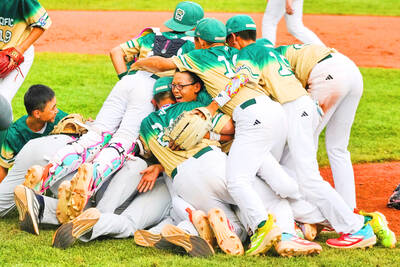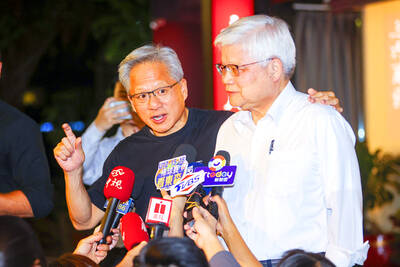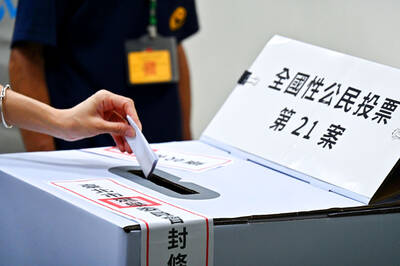On a kitchen table two young women have assembled a variety of items. There are brown bottles, bags of white powder, a pestle and mortar, a collection of funnels, a roll of silver gaffer tape. There is a drill. There is a whisk.
Are they making bombs? Are they making drugs? No. They are doing something far more likely to change the world we live in. They're making their own version of Coca-Cola.
Codenamed "Merchandise 7X," the list of ingredients that go into Coke has been kept carefully shrouded in mystery since the drink's inventor, a medicinal chemist called John Pemberton, first wrote it down in 1886. These days it is supposedly kept under 24-hour guard in a vault in Atlanta, Georgia, which is odd considering that author Mark Pendergrast published it in his expose of the cola industry For God, Country & Coca-Cola in 1993. The company maintains that this recipe is not the same as the one it uses.
Kate Rich and Kayle Brandon are bar managers at the Cube Multiplex, an "alternative" cinema in Bristol in southwestern England. Opposed in principle to the business and environmental practices of the Coca-Cola corpora-tion, the Cube bar has never served Coke. That doesn't mean there isn't a demand for it.
"We'd tried Pepsi and Virgin Cola and various others too," says Brandon, "but they weren't really a positive alternative. They were acceptable, but they weren't Coke. And people really want Coke."
After conducting various taste tests, they felt the preference had less to do with flavor than the power of the brand. Any alternative they were going to offer had not only to taste almost identical but overcome the incredible pull of Coca-Cola's marketing.
DIY attitude
"Given that most of the Cube's customers come because they like the place's DIY attitude," Brandon explains, "one way of doing that was to make the cola ourselves."
Cola is basically a mix of caramel, caffeine, sugar, fizzy water, citric or phosphoric acid and eight essential oils. It's the precise blend of these oils that lies at the heart of the 7X secret formula.
A trawl of the Web soon uncovered several 7X-type recipes, the most promising of which was adapted from the one in Pendergrast's book.
But turning the recipe into a palatable drink turned out to be more difficult than it looked.
"The oils we had to import from the US," says Rich. "The caramel had to be sourced direct from DD Williamson, a large operation based in Manchester which provides the caramel for all the Coca-Cola manufactured in the UK. And the caffeine we found at a body-building Web site."
When they had assembled most of the kit, they invited friends along to an "open lab" to help them make the drink.
"Unfortunately none of us had any scientific knowledge, and it's quite a scientific process," Rich says. "We spent half our time running out to get ingredients that we didn't have."
Though they came up with something like cola by the end of that first day, they couldn't replicate their success. The problem was getting the oils to mix with the other ingredients, a process called emulsification, or binding together.
The emulsifier used in most soft drinks is dried acacia sap, better known as gum arabic. But Rich and Brandon couldn't get this to work.
"We managed to destroy a whole series of kitchen mixers, completely trashed them. The gum arabic scoured the sides, the blades snapped ... it was really violent and very distressing," Rich says.
After the fourth mixer crashed, they realized it was time to seek help. A mass e-mail to the Cube's mailing list uncovered Peter Baron, an expert in food emulsification. He pointed out that they were using the wrong kind of gum arabic.
Baron also pointed out that making an emulsion was all about force. Rich and Brandon had scaled up their quantities, but not their mixing power. They were looking forlornly at the constituents of their cola lab when they noticed the tubular metal handle on one of their hand whisks was about the same thickness as a large drill bit.
Bingo! Whisking the mixture with a hammer drill produced the desired effect.
taste test
All they needed to do now was to add caffeine, caramel, sugar, citric acid and sparkling water -- and suddenly, from a single cup of emulsion, they had enough cola for a month.
So how does it taste? First, we try the real Coca-Cola. A restrained sweetness, low cool notes of caramel, dry on the tongue, quite flat on the palette. Very refreshing, but with little depth.
Now for Rich and Brandon's home-made product. The initial surprise is that it really does taste like Coke. Very slightly sweeter than "the real thing" but less acidic. A satisfying, complex flavor, subtly different from the brand leader, but easily as good.
Having found their liquid gold, Brandon and Rich plan to sell concentrate kits to other small bars and businesses. They maintain that they are not out to challenge the Coca-Cola hegemony, but they "do hope that along the way we'll help produce a small reality shift.
It's social change through science and baking."
The mega-corporation remains unfazed.
"As the saying goes, imitation is the sincerest form of flattery," says a Coca-Cola spokesman. "But our product is unique. Anyone with a selection of ingredients could make a type of cola, but there can only be one Coke."

Chinese Nationalist Party (KMT) lawmakers have declared they survived recall votes to remove them from office today, although official results are still pending as the vote counting continues. Although final tallies from the Central Election Commission (CEC) are still pending, preliminary results indicate that the recall campaigns against all seven KMT lawmakers have fallen short. As of 6:10 pm, Taichung Legislators Yen Kuan-heng (顏寬恒) and Yang Chiung-ying (楊瓊瓔), Hsinchu County Legislator Lin Szu-ming (林思銘), Nantou County Legislator Ma Wen-chun (馬文君) and New Taipei City Legislator Lo Ming-tsai (羅明才) had all announced they

CHAMPIONS: President Lai congratulated the players’ outstanding performance, cheering them for marking a new milestone in the nation’s baseball history Taiwan on Sunday won their first Little League Baseball World Series (LLBWS) title in 29 years, as Taipei’s Dong Yuan Elementary School defeated a team from Las Vegas 7-0 in the championship game in South Williamsport, Pennsylvania. It was Taiwan’s first championship in the annual tournament since 1996, ending a nearly three-decade drought. “It has been a very long time ... and we finally made it,” Taiwan manager Lai Min-nan (賴敏男) said after the game. Lai said he last managed a Dong Yuan team in at the South Williamsport in 2015, when they were eliminated after four games. “There is

Nvidia Corp CEO Jensen Huang (黃仁勳) yesterday visited Taiwan Semiconductor Manufacturing Co (TSMC, 台積電), as the chipmaker prepares for volume production of Nvidia’s next-generation artificial intelligence (AI) chips. It was Huang’s third trip to Taiwan this year, indicating that Nvidia’s supply chain is deeply connected to Taiwan. Its partners also include packager Siliconware Precision Industries Co (矽品精密) and server makers Hon Hai Precision Industry Co (鴻海精密) and Quanta Computer Inc (廣達). “My main purpose is to visit TSMC,” Huang said yesterday. “As you know, we have next-generation architecture called Rubin. Rubin is very advanced. We have now taped out six brand new

POWER PLANT POLL: The TPP said the number of ‘yes’ votes showed that the energy policy should be corrected, and the KMT said the result was a win for the people’s voice The government does not rule out advanced nuclear energy generation if it meets the government’s three prerequisites, President William Lai (賴清德) said last night after the number of votes in favor of restarting a nuclear power plant outnumbered the “no” votes in a referendum yesterday. The referendum failed to pass, despite getting more “yes” votes, as the Referendum Act (公民投票法) states that the vote would only pass if the votes in favor account for more than one-fourth of the total number of eligible voters and outnumber the opposing votes. Yesterday’s referendum question was: “Do you agree that the Ma-anshan Nuclear Power Plant